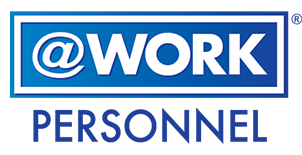The Upside of Passive Candidate Recruiting
According to LinkedIn's Talent Trends Report, 70 percent of users identify themselves as passive candidates. They are employed and do not spend time searching for new jobs, but would be interested in making a change if the right opportunity came along.
Zappos, the popular online retailer, has made it company policy to recruit passive talent. Based out of Las Vegas, Zappos operates in an area where the high demand for tech talent far outpaces the supply. If their HR team did not work to build a full pipeline of passive talent, Zappos would struggle to access the skills they need and fill open positions.
Focusing on passive candidates can save hiring teams time, money and resources. When hiring active job seekers, disproportionate man hours are spent on the drudgery of weeding out applicants who are not fully qualified or do not meet standards and specifications. When teams focus on passive talent, however, they are able to zone in on their specific criteria for positions and can focus their energy on those people who will be a great match for the job and the organization.
What makes passive talent so attractive?
Data indicates they are 120 percent more likely to want to make a real impact on their employer and are 33 percent more likely to request challenging projects. Passive candidates are also 17 percent less likely to require skill development. Passive candidates are the best candidates, but according to the LinkedIn report, only 61 percent of companies have a process in place for actively recruiting this talent, leaving the remaining 40 percent wading in a shallow pool of active applicants.
Tips for Getting Active in Passive Candidate Recruiting
There is no magic formula for recruiting passive talent, and it is important to remember that this approach is a marathon, not a sprint. Successfully landing a single passive candidate can take months even years. Consider strategies like:
- Employee referral programs: Employee referrals yield the best ratio of applications to hires. Referred employees report high job satisfaction once hired, and they typically stay longer than employees recruited through traditional tactics.
- Employer branding: In your digital marketing, communications and PR strategies, position yourself as a great place to work and highlight unique aspects of company culture whenever possible.
- Showcase company culture on your website: Your "careers" section should include more than just job postings. Give potential applicants a real idea of what it's like to work for the firm.
- Get active on LinkedIn: The most effective social network for recruiting; if you're not active here, you're missing passive candidates. But...
- ...Don't neglect other social networks: Make sure to stay active on platforms like Twitter, Facebook and Instagram.
- Blog: Blogging is an effective way to demonstrate thought leadership in your industry and connect with talent.
- Stay in touch with candidates: If someone isn't the right match for one job, but might be a great match for another, keep in touch with that person so you can contact them when a position opens up.
- Host industry events: Mixing and networking with pros in your field will help grow a network of passive talent to draw from.
When recruiting passive candidates, companies have to offer something more than their current employer gives. Whether it's salary, a better culture, better benefits or greater opportunities for growth, you must know what sets you apart from competitors.
Landing passive candidates isn't easy. It requires strong relationships, a sense of timing, and just the right level of salesmanship. Many internal HR teams simply don't have the time or resources to devote to a passive strategy. Partnering with a niche recruiting firm that does have the time and resources can keep you connected to a full pipeline of top-tier talent.

